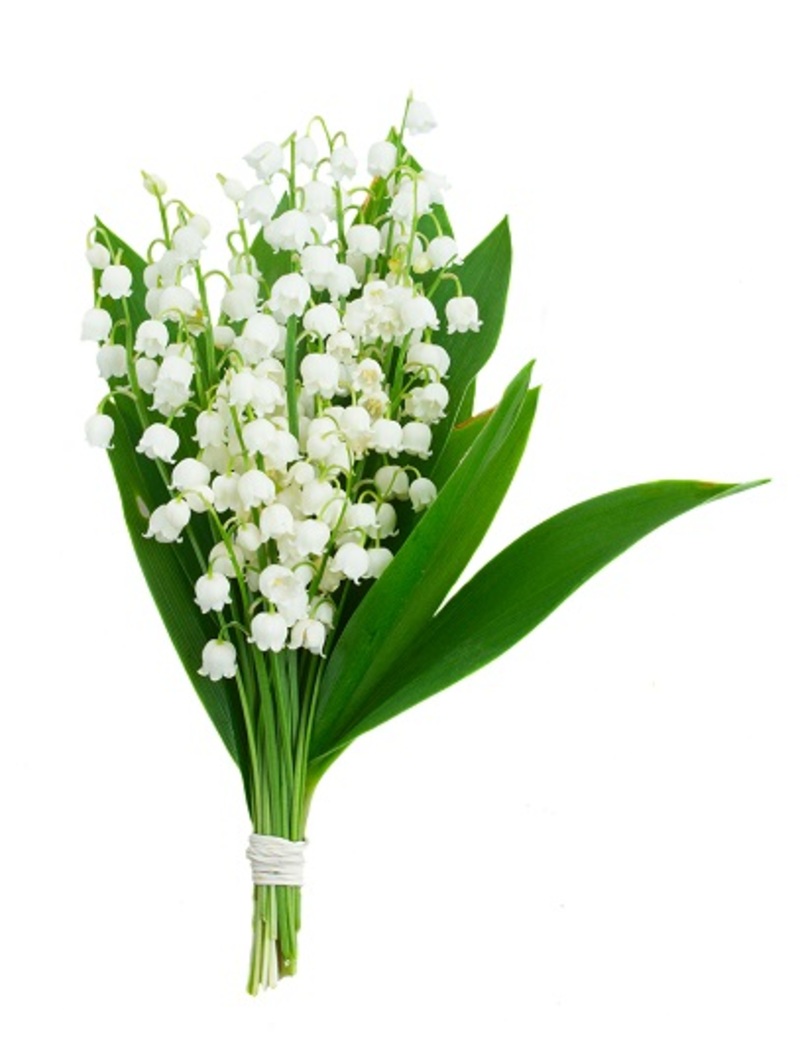Comprehensive Orchid Care Tips and Tricks
Posted on 17/08/2025
Comprehensive Orchid Care Tips and Tricks
Orchids are among the most enchanting and diverse plants, popular for their stunning blooms and remarkable resilience. However, to enjoy their full beauty, you need to understand the nuances of orchid care. Whether you're an enthusiast or a beginner, this comprehensive guide will walk you through the best orchid care tips, practical tricks, and expert strategies for lush, healthy plants.

Understanding Orchids: A Primer for Successful Growth
Before diving into the specifics of orchid maintenance, it's essential to recognize how unique these plants are. The Orchidaceae family boasts over 25,000 species, with a remarkable range of forms and preferences. Because of this diversity, the first trick to mastering orchid cleanliness and health is knowing your plant's specific needs.
Popular Types of Orchids for Beginners
- Phalaenopsis (Moth Orchid): Known for its long-lasting blooms and adaptability indoors, this orchid is ideal for novice growers.
- Cattleya: Famous for large, fragrant flowers and its preference for bright light.
- Dendrobium: Includes both warm and cool climate varieties, making it quite versatile.
- Oncidium: Sometimes called "Dancing Lady" orchids, these are favored for their prolific sprays of flowers.
Understanding your orchid's species is the first step in providing proper care. Always verify its label or consult with a specialist when in doubt.
Orchid Lighting Requirements
One of the critical elements of orchid plant care is lighting. Orchids vary in their light needs, but most thrive in indirect, bright light. Direct sunlight may cause leaf burn, while insufficient light leads to poor blooms and weak growth.
How to Determine Adequate Orchid Light Levels
- Leaf Color: Healthy orchid leaves are light to medium green. Dark green suggests inadequate light, while yellow or red indicates too much sun.
- Location: East-facing windows are perfect, offering gentle morning sun. South or west windows work with light filtering curtains.
- Artificial Lights: If natural light is limited, use fluorescent or LED grow lights placed about 6-12 inches above the orchid.
Pro Tip: Rotate your orchids regularly for even lighting and uniform growth.
Temperature and Humidity: Creating the Perfect Orchid Environment
Providing a suitable temperature and humidity range is crucial for healthy orchid growth. Most orchids prefer temperatures between 65?F - 75?F (18?C - 24?C) during the day and at least a 10?F (5?C) drop at night.
Best Humidity Levels for Orchids
- Ideal Humidity: 40-60% is best for most orchids.
- Raise Humidity: Use a humidifier nearby, or place orchid pots on a tray filled with pebbles and water (ensuring roots don't touch the water).
- Air Circulation: Good airflow reduces the risk of fungal disease. Use a fan on a low setting in the room.
*Seasonal note*: Some orchids require a rest period with lower temperatures and less water to encourage prolific blooms.
Watering Orchids: Tricks for Avoiding Root Rot
Improper watering is a common cause of orchid problems. The roots need both moisture and air--overwatering causes root rot, while underwatering leads to dehydration.
General Orchid Watering Guidelines
- Always check the top 1-inch of potting mix; water when it's nearly dry.
- Water in the morning, allowing leaves to dry by evening.
- Use tepid, distilled, or rainwater as tap water may contain chemicals that harm orchids.
- Let water drain freely; do not let roots sit in standing water.
Pro Orchid Tip: Many growers use the "soak and dry" method--watering thoroughly and then letting the plant almost dry out before the next watering.
Choosing the Right Orchid Pot and Medium
Orchids are epiphytes in nature, meaning their roots need air circulation just as much as moisture. The right pot and growing medium can make all the difference in your long-term orchid care.
What is the Best Pot for Orchids?
- Clear plastic pots: Allow you to observe root health and moisture levels.
- Clay pots: Provide good airflow but dry out faster.
- Pots with slits or holes: Promote airflow and drainage.
Top Orchid Growing Mediums
- Fir Bark or Sphagnum Moss: The most common choices, each with unique water retention.
- Leca (clay pellets): Excellent for semi-hydroponic setups.
- Charcoal, Perlite, and Coconut Husks: Often mixed in for added drainage and ventilation.
Repot your orchid every 1-2 years, or when the media breaks down, to ensure healthy, thriving roots.
Fertilizing Orchids for Vibrant Blooms
Fertilizing is another secret to spectacular flowering. Orchids have specific nutrient needs, but too much can damage sensitive roots. "Weakly, weekly" is the classic guideline for orchid fertilization.
Essential Fertilization Tips for Orchid Plants
- Use a balanced, water-soluble orchid fertilizer (20-20-20, 30-10-10, or 10-30-20 depending on growth or blooming phase).
- Dilute to half or quarter strength compared to the package directions.
- Fertilize every other watering during active growth, and less during dormancy.
- Flush the pot with plain water monthly to prevent fertilizer salt build-up.
Over-fertilizing can burn roots; when in doubt, less is more.
Pruning, Grooming, and Supporting Orchid Health
Proper pruning and cleaning keep your orchid looking its best while safeguarding against disease.
Steps for Pruning and Grooming Orchids
- Remove dead or yellowing leaves and spent flower spikes using sterile scissors to avoid infection.
- Trim brown or mushy roots at repotting time.
- Wipe leaves with a damp cloth to remove dust and pests.
- Support tall flower spikes with stakes as needed.
Always sterilize tools before and after use to prevent spreading orchid diseases.
Managing Orchid Pests and Diseases
Keeping your orchid pest and disease-free is crucial for long-term enjoyment. Orchids, while generally resistant, can occasionally fall victim to problems like mealybugs, scale, spider mites, bacterial soft rot, or fungal spots.
Orchid Pest Control and Disease Prevention Tips
- Inspect new plants before bringing them home. Quarantine for two weeks if possible.
- Maintain clean pots and surroundings--remove fallen leaves or petals promptly.
- Treat pests with insecticidal soap or neem oil at the first sign of infestation.
- For fungal or bacterial problems, use cinnamon (a natural fungicide) on cuts and wounds, or apply recommended commercial treatments.
- Avoid crowding orchids; ensure good air circulation.
Consistent vigilance and prompt action are your best defenses.
Helping Orchids Rebloom: Tricks for Repeat Blooms
One of the most rewarding aspects of orchid keeping is seeing your plant bloom again. Triggering reblooming can require some patience and know-how.
Orchid Reblooming Techniques
- After blooms fade, trim the flower spike above a node (for Phalaenopsis) to encourage a side spike.
- Provide a slight drop in night temperature (~10?F or 5?C) for several weeks to stimulate flower buds.
- Resume regular fertilization and maintain steady watering.
- Provide bright, filtered light.
- If the plant takes a break, trust the process--a dormancy period is natural for some orchids.
Remember: Orchids don't bloom all year round, but proper care ensures impressive flowers season after season.
Common Orchid Care Mistakes (And How to Avoid Them)
Nobody gets orchid care perfect every time. Here are some frequent missteps and expert solutions:
- Overwatering: Always check root zone moisture; err on the side of less, not more.
- Wrong pot or potting medium: Use airy media and pots with good drainage.
- Too much direct sun: Filter sunlight, especially in the afternoon.
- Neglecting humidity: Monitor humidity and mist leaves as needed.
- Forgetting to repot: Replace the potting medium every 1-2 years.
Awareness of these common pitfalls will make your orchid journey smoother.
Expert Orchid Care Tips for Year-Round Success
- Label your orchids: Knowing the exact species or hybrid helps tailor care.
- Monitor for growth cycles: Some orchids need a dry rest or temperature drop to bloom.
- Join local orchid societies: Learning from experienced hobbyists is invaluable.
- Document your orchid's progress: Photos and notes will help refine your care routine.
- Embrace experimentation: Each home environment is unique. Adjust your care to what your orchid seems happiest with.

Frequently Asked Questions About Orchid Plant Care
How do I know if my orchid needs water?
Insert a finger into the potting mix. If it feels almost dry, it's time to water. Another popular method is checking root color--silvery or white roots signal thirst, while green roots indicate moisture.
When should I repot my orchid?
Repot every 1-2 years, ideally after flowering, or when the potting media breaks down or roots outgrow the container.
Should I cut the orchid stem after flowering?
For Phalaenopsis orchids, cut above a node to encourage new spikes. For others, such as Cattleya or Dendrobium, remove old spikes at the base after blooming.
What is the best temperature and humidity for orchids?
Most orchids thrive at daytime temperatures between 65?F and 75?F (18?C-24?C), and humidity of 40-60%.
Do orchids need to be misted?
Occasional misting can help in dry climates--not as a substitute for watering, but as a humidity boost. Ensure leaves dry quickly to prevent fungal problems.
Conclusion: Mastering the Art of Orchid Care
With these comprehensive orchid care tips and tricks, you'll be well-equipped to grow dazzling, healthy orchids year after year. The key to success is consistency--monitor your orchids' environment, respond to their needs, and enjoy the rewarding process of cultivating one of nature's most exquisite plants.
For the best results, always observe your plant, adjust your routines as needed, and never hesitate to seek advice from fellow orchid enthusiasts. With patience, knowledge, and a bit of orchid passion, you can transform your indoor or outdoor space into a spectacular floral showcase. Happy growing!
Latest Posts
Comprehensive Orchid Care Tips and Tricks
Which Floral Beauty Holds the Key to Your Character
Peonies and Their Profound Symbolism Through Colors
Stunning Hydrangeas: Tips for Optimal Care
Effortless Elegance: 10 Best Low Maintenance Plants for Your Desk





